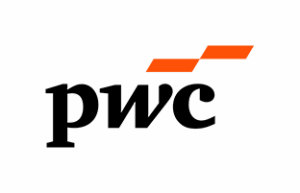Scaling agile success: How SAFe transforms enterprise delivery
What is SAFe?
SAFe (Scaled Agile Framework) is an agile methodology designed to support development teams, particularly within large organizations. It is built on three core pillars: Team, Program and Portfolio. SAFe offers product teams the flexibility needed to adapt and scale agile practices effectively. It also addresses common challenges faced by enterprises implementing agile at scale. With its extensive knowledge base of proven best practices, SAFe empowers product teams to consistently deliver successful software solutions.
What are the advantages using SAFe?
- Faster Time-to-Market
SAFe helps organizations deliver value more quickly by aligning teams to fulfill customer needs and streamlining decision-making.
- Johnson Controls (a technology company) reported that they achieved 2 – 4x faster releases with 100% predictability
- Air France teams using SAFe delivered 20% more effectively than traditional waterfall teams
- Increased Productivity
SAFe empowers high-performing teams to eliminate inefficiencies, reduce delays and focus on delivering the right value.
- Chevron (energy sector) improved productivity with a fully remote workforce
- Other companies using SAFe often report 20–50% gains in productivity
- Improved Quality
Built-in quality practices are embedded throughout SAFe, reducing defects and technical debt.
- Cisco (a technology company) saw a 40% decrease in defects after adopting SAFe
- Centres for Medicare and Medicaid Services reduced help desk tickets by 55%
- Better Employee Engagement
SAFe fosters autonomy, mastery and purpose – key drivers of intrinsic motivation.
- Nokia improved team collaboration and predictability
- Sproutloud (a leading distributed marketing platform) reported better alignment and employee satisfaction
SAFe vs. Scrum
SAFe and Scrum are not mutually exclusive, they serve different purposes depending on the scale and goals of an organization. Scrum is ideal for small, focused teams working on single projects. It emphasizes flexibility, transparency and close communication, making it a powerful tool for iterative development and rapid delivery.
However, Scrum alone struggles to manage the complexity of large organizations running multiple projects simultaneously. That’s where SAFe comes in. It provides a structured framework to coordinate multiple teams, manage dependencies and align efforts across programs and portfolios.
SAFe introduces layers of oversight such as the Agile Release Train at the program level and portfolio management at the enterprise level to ensure alignment and consistency. While this adds more planning and structure, it’s necessary to maintain order and scalability in larger environments.
Though SAFe may reduce some of Agile’s spontaneity, it enables standardization, resource flexibility and component compatibility which is critical for enterprise-level success. Rather than choosing between SAFe and Scrum, organizations often use them together, applying Scrum at the team level within the broader SAFe structure.
Is SAFe right for your company?
While SAFe offers a powerful framework for scaling Agile, it’s not a universal solution. Its effectiveness depends on your organization’s size, structure, goals and readiness for change. Here are some key points to consider:
- Large enterprises with multiple agile Teams
SAFe was specifically designed to address the complexity of coordinating dozens or even hundreds of Agile teams working on interconnected products or services. If your organization struggles with:
- Cross-team dependencies
- Misaligned priorities
- Fragmented delivery pipelines
Then SAFe can provide the structure and synchronization needed to bring order and alignment across the enterprise.
- Organizations in regulated industries
Industries like finance, healthcare, aerospace and government often face strict compliance, documentation and audit requirements. SAFe supports these needs by:
- Embedding quality and compliance into the development process
- Providing traceability from strategy to execution
- Supporting documentation and governance without sacrificing agility
This makes SAFe a strong fit for organizations that must balance innovation with regulatory rigor.
- Companies undergoing Digital Transformation
Digital transformation is more than just adopting new technologies. It’s about changing how an organization delivers value. SAFe helps by:
- Aligning business and IT around customer-centric value streams
- Encouraging a Lean-Agile mindset across departments
- Enabling faster feedback and continuous learning
If your organization is shifting from legacy systems to cloud-native platforms or from project-based to product-based delivery, SAFe can accelerate that journey.
- Enterprises seeking to align IT and Business Strategy
One of SAFe’s core strengths is its ability to bridge the gap between business strategy and technical execution. Through tools like Strategic Themes, Portfolio Kanban and Lean Budgets, SAFe ensures that:
- Every team’s work is tied to business objectives
- Investment decisions are transparent and value-driven
- Business owners are actively engaged in the delivery process
This alignment is crucial for organizations aiming to become more responsive and customer focused.
- Cultural change is essential
SAFe requires a shift in mindset – from command-and-control to empowerment and collaboration. Leaders must embrace servant leadership and teams must be willing to take ownership of the outcomes.
- Training and coaching are critical
To implement SAFe successfully, organizations need to invest in:
- Certified training for roles like SAFe Agilist, Scrum Master and Product Owner
- Experienced SAFe Program Consultants (SPCs) to guide the transformation
- Ongoing coaching to reinforce practices and principles
- Tooling and infrastructure must support SAFe
SAFe works best when supported by Agile lifecycle management tools like AzureDevOps, Jira Align or VersionOne. These tools help manage backlogs, visualize dependencies and track progress across teams and portfolios.
- It’s a journey, not a destination
SAFe implementation is an iterative process. Organizations typically start with Essential SAFe and evolve toward Portfolio or Full SAFe as they mature. Continuous improvement is baked into the framework through Inspect & Adapt workshops and Lean metrics.
Sources:
- https://framework.scaledagile.com/page/2/?s=features
- https://framework.scaledagile.com/wp-content/uploads/delightful-downloads/2020/07/Agile-Marketing-White-Paper.pdf
- https://framework.scaledagile.com/wp-content/uploads/delightful-downloads/2020/09/SAFe_and_TBM_white-paper_v3.pdf
- https://framework.scaledagile.com/advanced-topics/extended-safe-guidance/
- https://scaledagile.com/what-is-safe/scaled-agile-benefits/
- https://www.productplan.com/glossary/scaled-agile-framework/
Autor:
Markus Kittenberger

